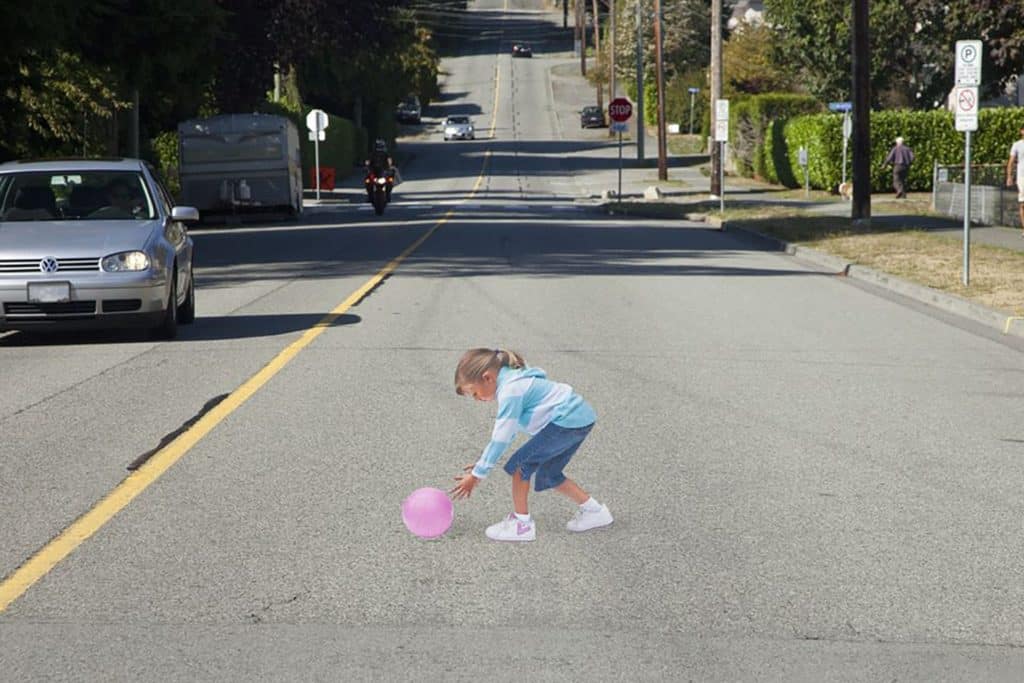Ensuring pedestrian safety is essential for successful communities. Pavement markings in combination with physical speed control devices, traffic lights, and street lighting are the main tools used to guide the safe interaction of pedestrians and drivers. Traditional pavement markings consist of various types of coatings applied to the roadway surface in the form of lines and words (stop, slow, etc.). Several cities and towns around the world are exploring the impact of a new form of pavement marking— three-dimensional paints that create images that hover above the road.
In New Delhi, India, nearly 20 three-dimensional (3-D) crosswalks comprising striped lines that, from the driver’s perspective, look like 3-D blocks floating in the middle of the road have been installed. Speeds were observed to initially decline by 15% where they have been installed, then slowly creep up again. Even so, the 3-D crosswalks create public awareness and discussion of pedestrian safety and the need to slow down at intersections. Each time a driver sees the unusual crosswalk, he or she is reminded about why it was installed. In addition, any driver approaching the crosswalk for the first time slows down, causing all of the drivers behind him/her to slow down as well. In London, at least 45 3-D crosswalks have been installed that look like speed bumps and are referred to by local officials as “2-D road cushions.” During a trial installation in 2014, average speeds were reduced by three miles per hour.
In the United States, 3-D pavement markings violate existing national roadway standards established by the Federal Highway Administration, but these unique traffic control solutions can receive separate approval from the agency if it desires. Recently, Medford, MA elected to install 3-D crosswalks that look like floating blocks at intersections near several elementary schools. The project was initiated by two students at the Brooks Elementary School who participate in the Center for Citizenship and Social Responsibility, a district-wide after-school program in Medford. The first crosswalk was painted by artist Nate Swain, who is the facilities manager at Artists for Humanity and also does commissioned and guerrilla art. The installation required approximately six cans of traffic-striping paint and 15 hours of total time spread over three days (to allow individual coats to dry).
For more information, see:
Matt Rocheleau, “Can optical illusions trick drivers into slowing down?” The Boston Globe, November 9, 2017. https://www.bostonglobe.com/metro/2017/11/09/floating-sidewalks-children-running-street-can-optical-illusions-trick-drivers-into-slowing-down/D9Lm0v6rbG3hZm9IimWaLI/story.html.
Matt Rocheleau, “Students convince Medford to install ‘3-D’ crosswalks at elementary schools,” The Boston Globe, April 22, 2019. https://www2.bostonglobe.com/metro/2019/04/22/students-convince-medford-install-crosswalks-elementary-schools/LolOjXXkyKBxBsB8vNJCNM/story.html?camp=breakingnews:newsletter.
